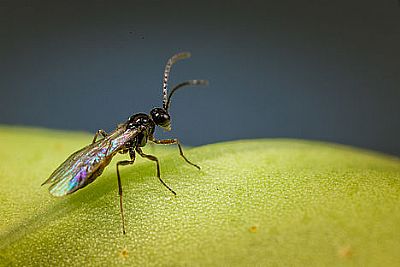APHIPAR - M / Aphidius matricariae
Parasitic wasp
Target
Use Aphipar - M for biological pest control of primarily tobacco aphid (Myzus persicae nicotianae) and peach potato aphid (Myzus persicae). It has a side effect on cotton aphids.
Packing
- 100 ml bottle, hatches 1.000 parasitic wasps
- 250 ml bottle, hatches 5.000 parasitic wasps
Each bottle contains mummies mixed with wood-chips
Dosage APHIPAR - M
|
|
Rate (ind./m2)
|
m2/ unit
|
Frequency
|
Interval (days)
|
Remarks
|
|
Preventive
|
0,25
|
4000
|
-
|
7
|
|
|
Light curative
|
1
|
1000
|
min. 3x
|
7
|
|
|
Heavy curative
|
2
|
500
|
min. 3x
|
7
|
|
The information given below is merely indicative. Tailored advice can be provided if information is available on the local factors that need to be taken into account, such as the crop, the climate conditions and the level of infestation. For the correct approach, please consult a specialist of our company.
How does Aphipar - M work
Adult female parasitic wasps lay their eggs parasitically in the aphids, causing them to swell and harden into leathery, grey/brown mummies. The first adult parasitic wasps emerge through a round hole at the rear of the mummies approximately 10-14 days after introduction.
Application Aphipar - M
- Spread the material on rock wool slabs or in application boxes (Dibox)
- Make sure the material remains dry and is not moved from its introduction site for at least a few days
- Use the peel-off label to mark where the product has been introduced
Best working conditions Aphipar - M
Efficacy reduces at temperatures above 28°C.
Handling
Biological beneficials have a very short life expectancy and therefore need to be introduced into the crop as soon as possible after receipt. Failure to do so can have a negative impact on their quality. In case you do need to store Aphipar - M, please follow the instructions below.
Storage
- After receipt: 1-2 days
- Storage temperature: 8-10°C/47-50°F
- In the dark
Pesticides can have (in)direct effects on beneficials. Check here



 HellasSITES
HellasSITES